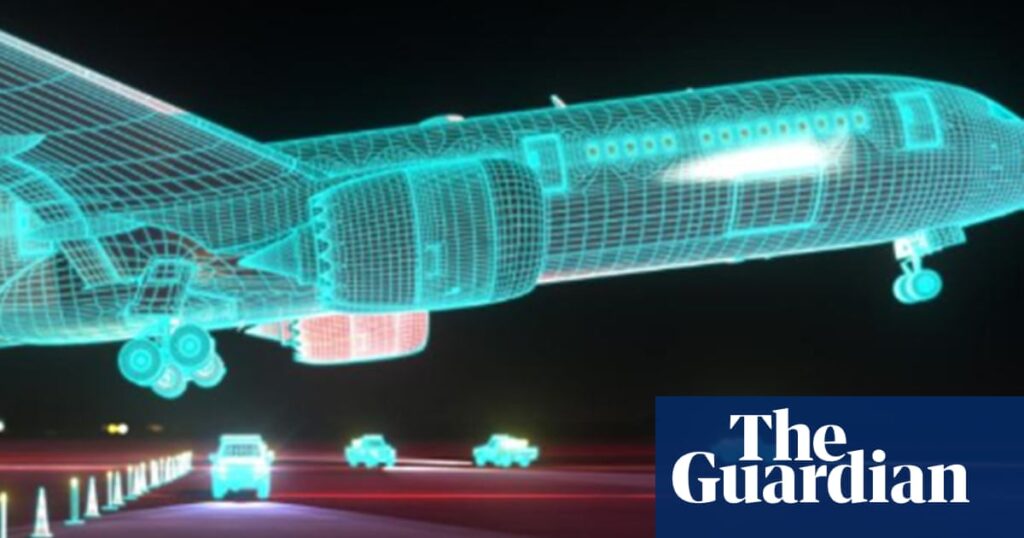Two passenger planes only narrowly avoided colliding with construction vehicles and workers during takeoff at Melbourne airport in 2023, in one case by less than five metres, because the flight crews were unaware the runway was nearly 1,600m shorter than usual, an Australian safety investigation has found.
The incidents, described as “terrifying” for workers on the ground, have prompted changes to domestic and international practices on notifying flight crews about critical safety information to reduce the potential for human error in takeoff.
On Tuesday, the Australian Transport Safety Bureau released its final report into the incidents, which occurred in September 2023, when two planes overshot the end of the same runway on takeoff, 11 days apart.
Sign up: AU Breaking News email
The runway had been temporarily shortened from 3,657 metres to 2,089 metres to allow for night-time resurfacing works.
In the first incident on 7 September, a Malaysia Airlines Airbus A330-300 with 247 people on board overran the runway while taking off for a flight to Kuala Lumpur, passing less than seven metres above workers and construction vehicles.
Eleven days later, a Bamboo Airways Boeing 787-9 bound for Hanoi also lifted off beyond the temporary end of the runway, narrowly missing workers by 4.5 metres.
No physical injuries were recorded and the planes continued with their planned flights.
The ATSB’s investigation found the flight crews had not absorbed or factored critical information about the changes to the runway length into their takeoff calculations due to expectations, workload and time pressures.
“These were serious incidents,” the ATSB chief commissioner, Angus Mitchell, said. “In both cases we had a fully loaded and fuelled aircraft with over 200 personnel on board coming within metres of fixed equipment on the ground and with works equipment. So it was by luck in this case that we didn’t have an impact.”
The ATSB investigation found flight crews had been notified of the changes to the runway via written reports and the airport’s automatic terminal information service, an audio loop accessed as a standard part of flight planning procedures.
The dispatchers, who brief flight crews, also accounted for the shortened runway distance when calculating whether the planes could take off as planned. However, because it did not result in changes to logistics such as weight distribution, only the level of thrust required for takeoff – which is the pilot’s responsibility to calculate – the dispatchers did not specifically draw the flight crew’s attention to the runway length.
The Malaysia Airlines crew told investigators their focus before takeoff had been on taxiway closures, while the Bamboo Airways crew said they had been experiencing a high workload due to repeated power outages and felt under time pressure to depart.
Mitchell said the risk controls in place at the time were “procedural in nature”.
“These and previous incidents show that this process is susceptible to human error, considering the potentially catastrophic consequences of a loaded and fully fuelled aircraft impacting a work site on takeoff,” he said.
after newsletter promotion
“Certainly to those workers on the ground it was a terrifying experience, and that’s why we’ve been so detailed in the investigation but also in our safety recommendations to ensure that this type of thing does not occur, particularly in Australia, again.”
Both airlines have since updated their flight dispatcher procedures and processes in response to the incident, Mitchell said.
The International Civil Aviation Organization (ICAO) has also introduced standards for highly visible signage around airports to alert flight crews of temporary changes to runway lengths.
Air Services Australia, in consultation with the Australian Civil Aviation Safety Authority, are working on proposed changes to air traffic control procedures around delivering essential information associated with runway works to flight crews.
The ATSB Commission also issued a formal safety recommendation that ICAO review its standards and recommended practices for air traffic control communications to increase assurances that flight crews have received important information on aerodrome conditions.
Guardian Australia has approached Malaysia Airlines and Bamboo Airways for comment.

